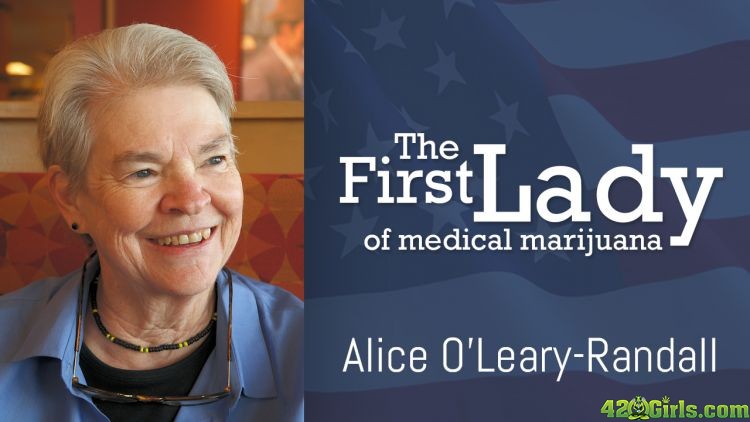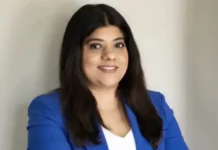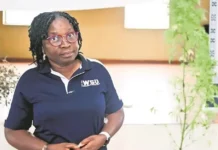Were you to run into Alice O’Leary-Randall in Sarasota, you might not think her remarkable. At 68, O’Leary-Randall is a youthful-looking retired hospice nurse and amateur photographer—but she’s much more. In many parts of the world, including this country, she’s known as the First Lady of the medical marijuana movement.
Her late husband, Robert Randall, was the first person in America to legally use marijuana for a medical condition. The government mailed the drug to him for years, starting in 1976. After he died in 2001, the leadership torch passed to her.
O’Leary-Randall grew up in Sarasota and eventually earned a degree in stage design and production from USF. “After college I traveled a bit, working in various theaters, but then ended up in Washington, D.C., with Robert, who was also from Sarasota,” she says. The couple returned to Sarasota in 1995, when Robert was diagnosed with AIDS.
After he died six years later, O’Leary-Randall went back to college for a nursing license and worked for Tidewell Hospice from 2006 until she retired in 2012. Today she spends her summers in a mobile home in the mountains of North Carolina, often photographing and blogging about her rustic life there. But wherever she is, she continues to advocate for medical marijuana.
O’Leary-Randall explains to audiences from Australia to Europe how the couple first became involved in medical marijuana.
In his early 20s, Robert discovered he had glaucoma.
Doctors told him he would be blind by age 30. There was no effective treatment.
Then, one day in 1976, Robert smoked a joint.
And a funny thing happened: The halos he had been seeing around lights, a tipoff to failing eyesight, disappeared. The couple began researching to determine if marijuana was helping Robert’s glaucoma. Testing confirmed the relationship. They decided they needed a steady supply of something banned by the federal government, an illegal substance deemed to have “no medical purpose.” So they went to court.
Presenting their test results, they argued that marijuana was not only helping Robert’s vision, but might also prevent the blindness that is glaucoma’s normal conclusion. The court agreed with them. Marijuana, for Robert, was medicine. And the federal government obeyed the court ruling. It supplied Robert with his needs. His eyesight returned to normal and stayed that way for the rest of his life.
Galvanized by their experience, the two went on a crusade. They helped pass laws in 35 states that supported the medical value of marijuana, and in the 1980s founded a nonprofit advocacy organization, the Alliance for Cannabis Therapeutics, which became a prime mover in legislative efforts, laying the groundwork for today’s state ballot initiatives.
In November, Florida joined the states that have voted to allow citizens to use medical marijuana.
“I am delighted that Amendment 2 [allowing medical marijuana] passed,” O’Leary-Randall says. “The legislature was never going to resolve the problem and something had to be done. There are many individuals who could be helped with cannabis, people with absolutely brutal diseases.”
She believes that cannabis helps suppress a number of diseases. “In 1992, they discovered a system within all humans that is receptive to cannabis. They named it the endogenous cannabinoid system after the plant substance that binds with it,” she says. O’Leary-Randall and other proponents believe this system helps keep the body in balance. “It seems to me that federal authorities would be excited about this and pour research dollars into it,” she says.
But possession of cannabis is still against federal law. Under President Obama, the federal government chose not to enforce that law in states that had voted to legalize marijuana. O’Leary-Randall doubts the federal prohibition will disappear under a Trump administration. “And it is a shame because we desperately need oversight on a federal level to establish standards and procedures,” she says. She’s particularly concerned about the choice of Sen. Jeff Sessions as Attorney General.
“[He’s said] that ‘Good people don’t use marijuana,’” she laments. “Now he is in charge of the Drug Enforcement Administration. Many in the DEA would like nothing better than to continue the reefer madness [enforcement] of old.”
She continues to try to counter them. In 2014, she published Medical Marijuana in America: Memoir of a Pioneer. Now, in addition to continuing to give speeches, she’s working on a book about using medical cannabis as a senior, and she contributes regularly to Cannabis Now Magazine and Huffington Post. “It is important to me to keep alive the memory of my husband as well as others who fought this battle long before it was the ‘in’ thing,” she says.
News Moderator: Katelyn Baker [URL=”http://www.420magazine.com”]420 MAGAZINE ®[/URL]
Full Article: [URL=”https://www.sarasotamagazine.com/articles/2016/12/29/sarasota-medical-marijuana”]Alice O’Leary-Randall Crusades For Medical Marijuana[/URL]
Author: Robert Bowden
Contact: (941) 487-1100
Photo Credit: None Found
Website: [URL=”https://www.sarasotamagazine.com/”]Sarasota Magazine[/URL]











